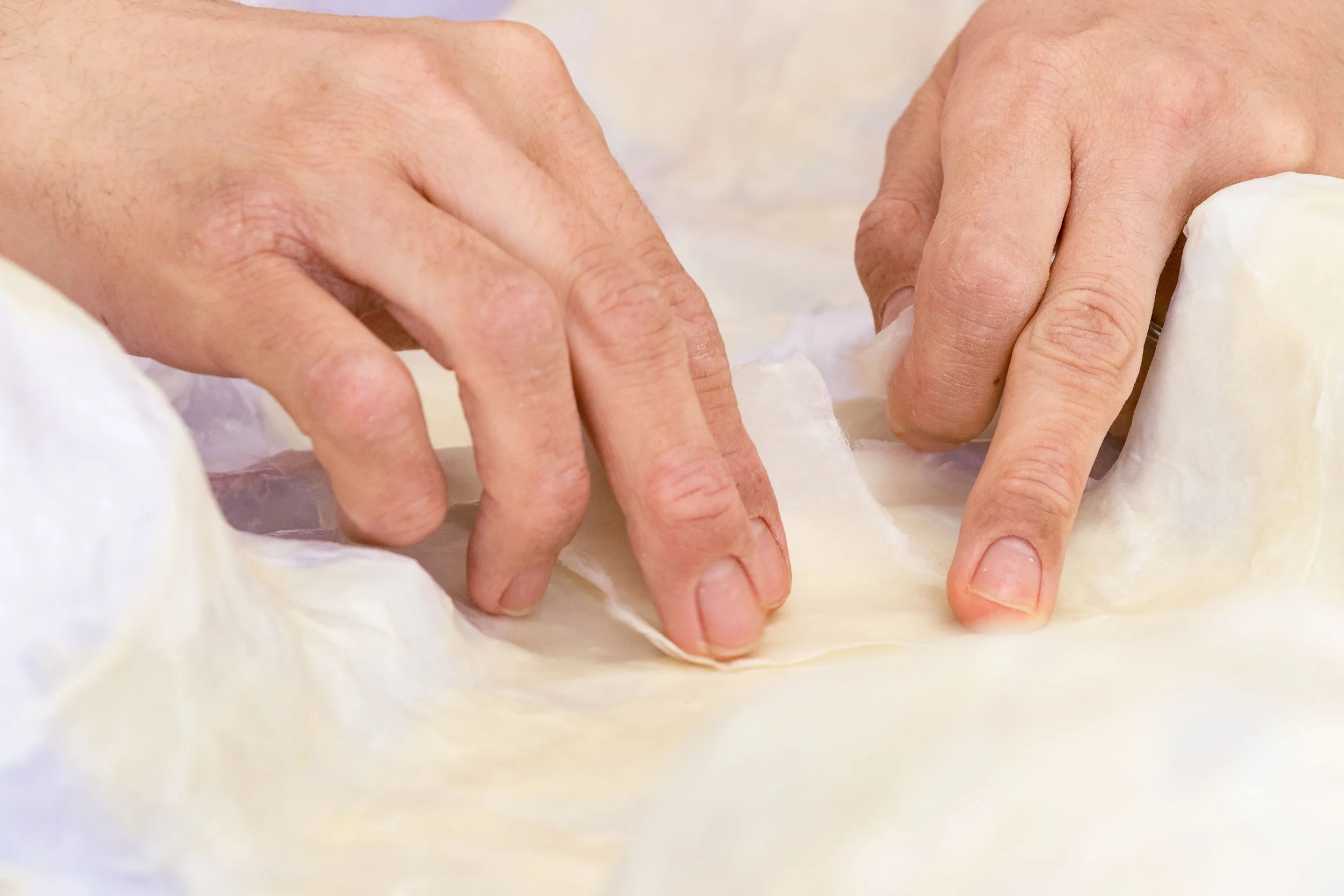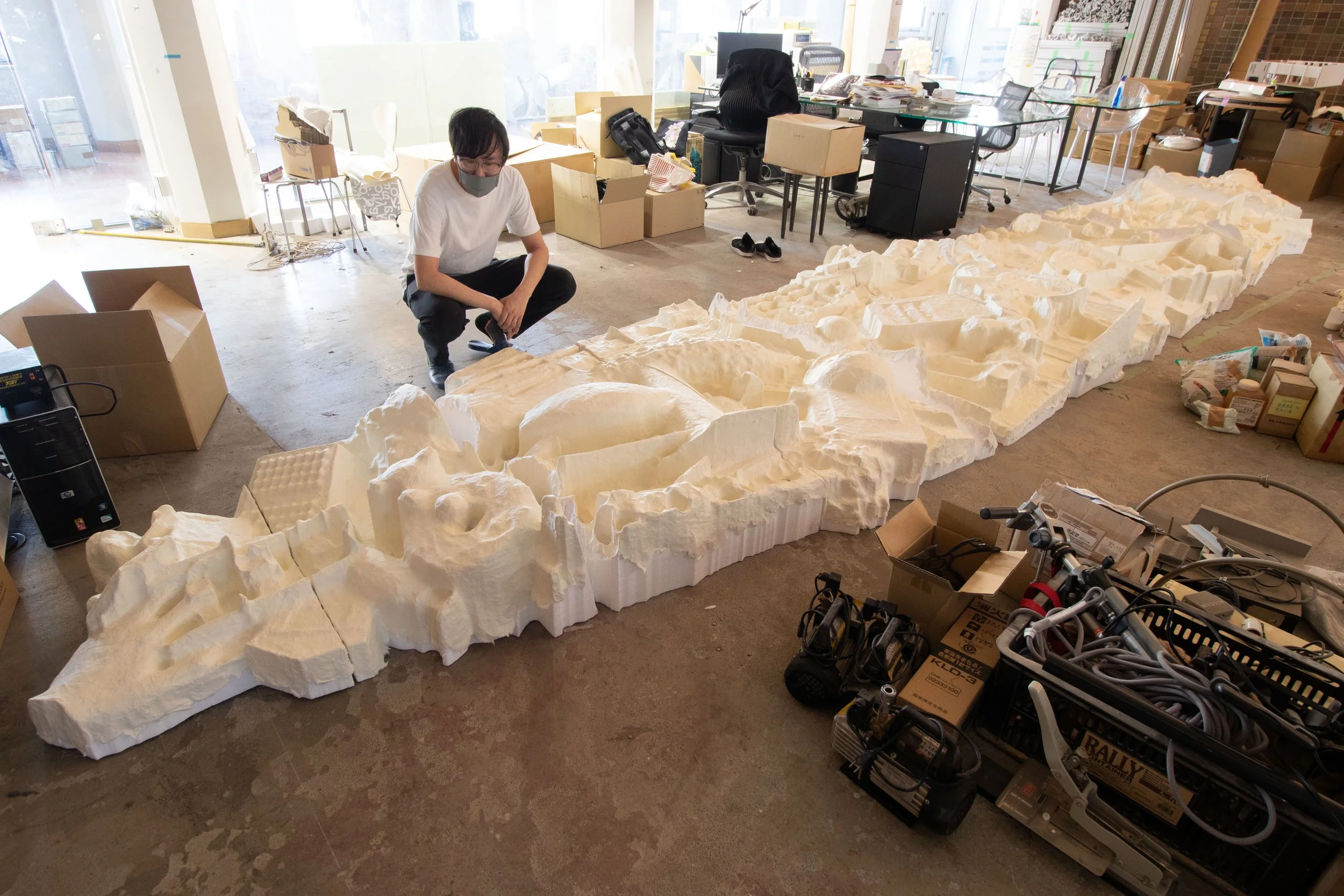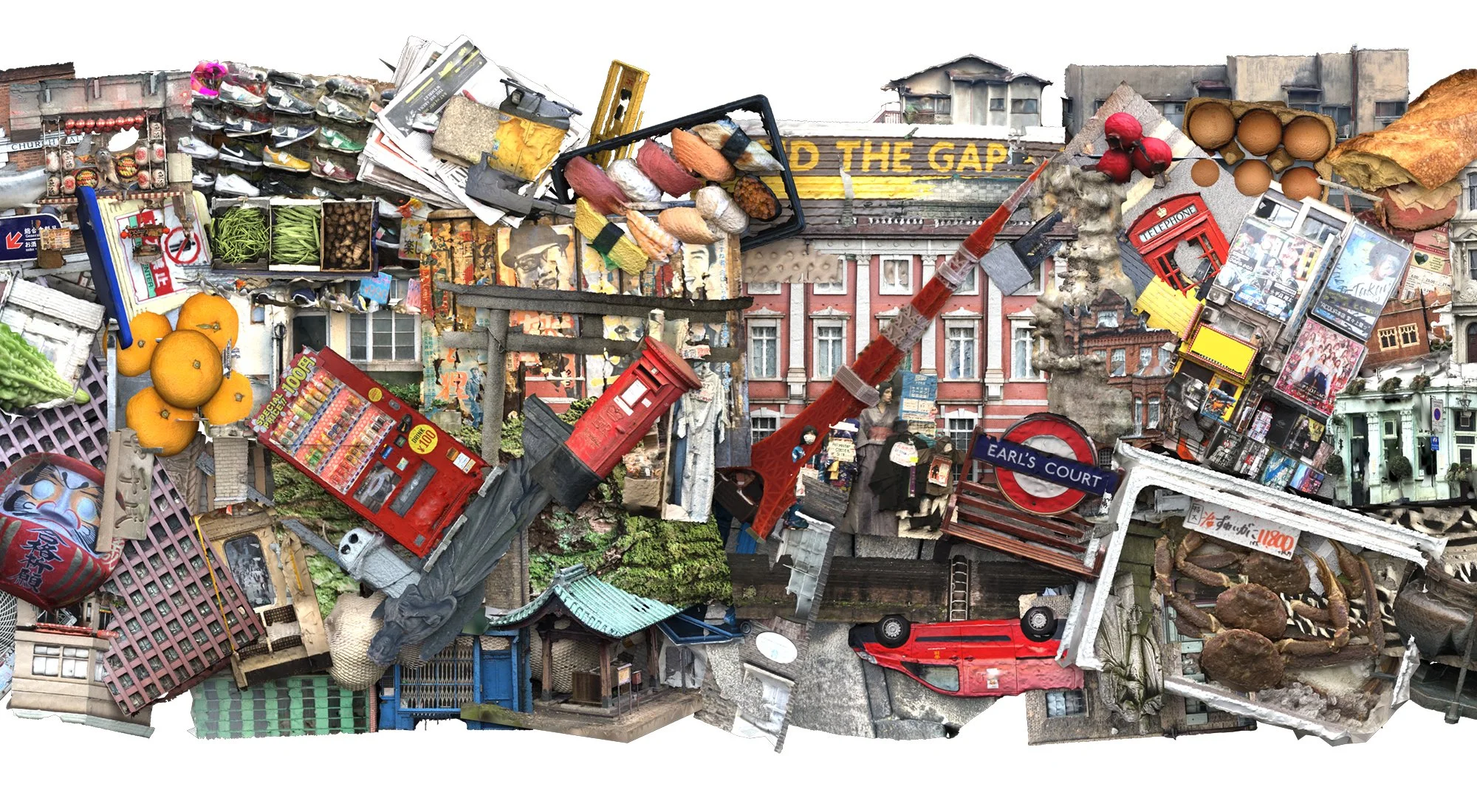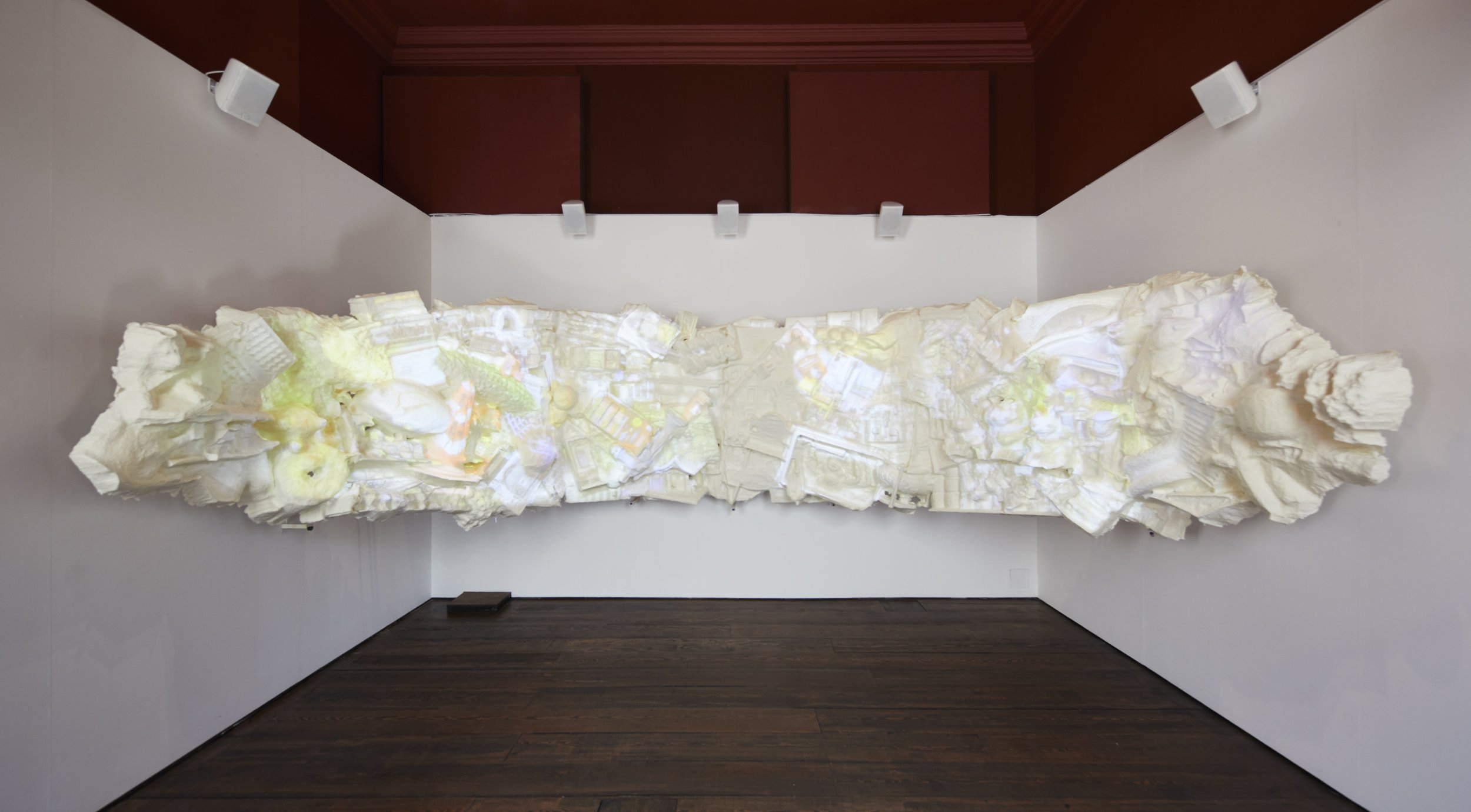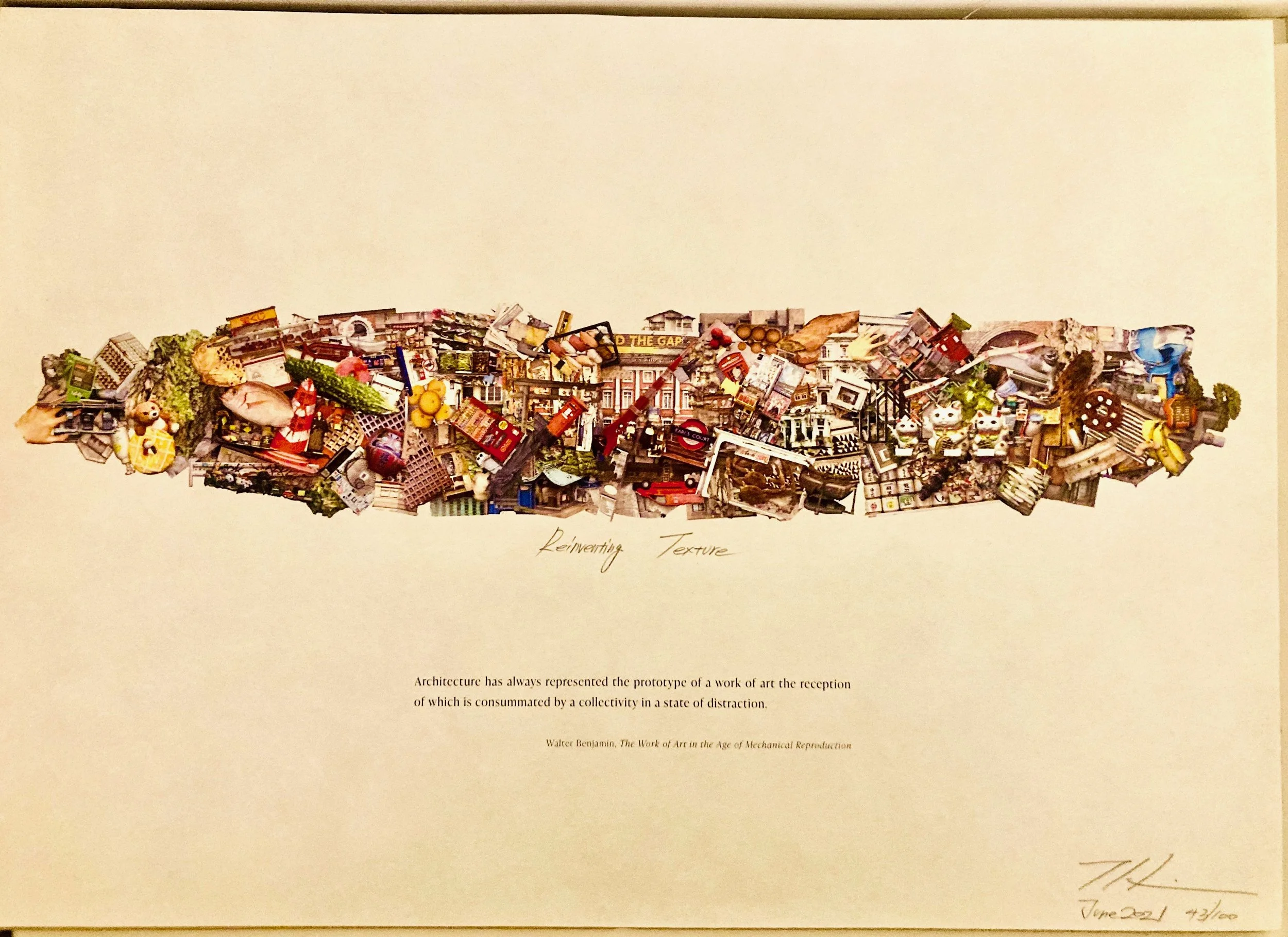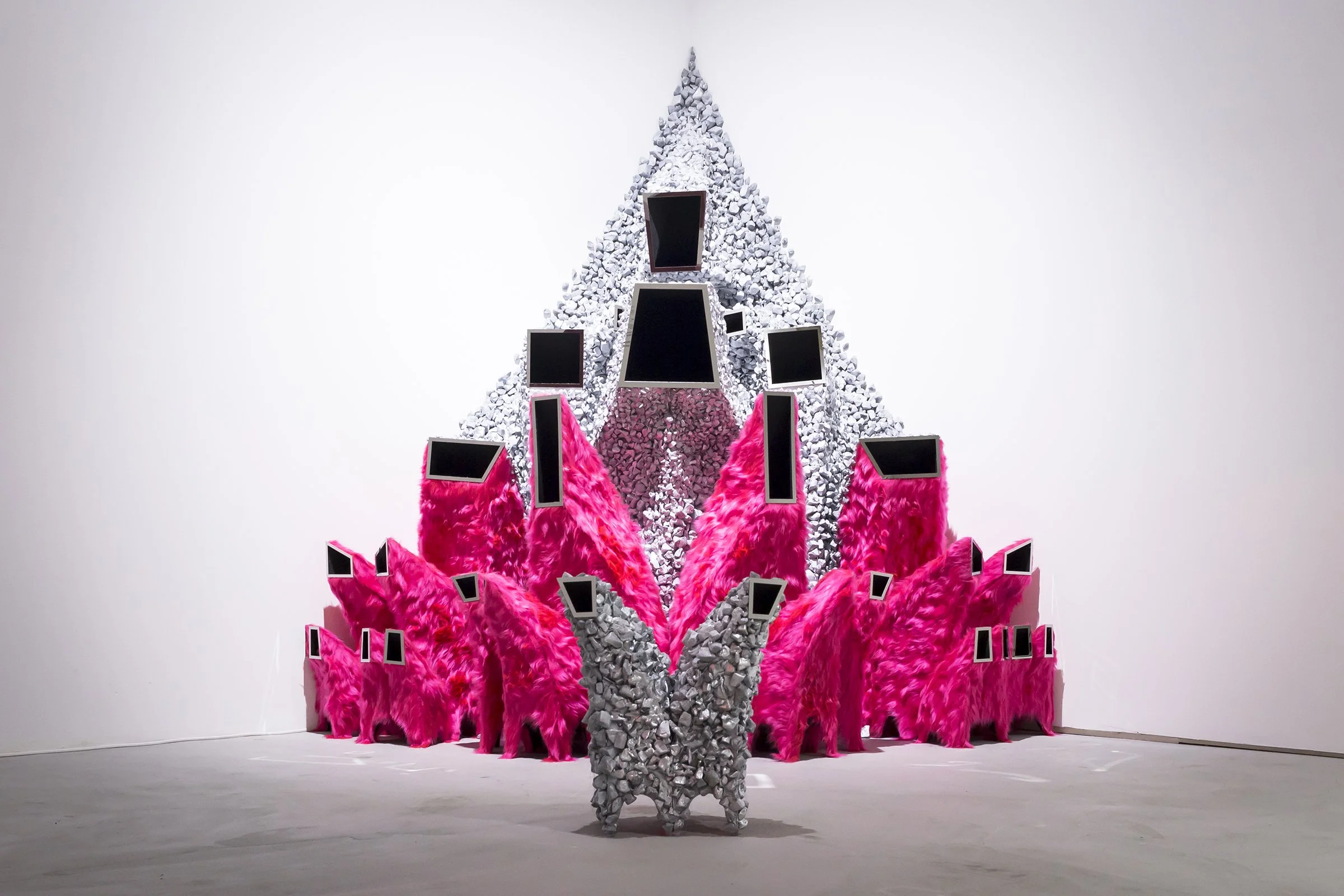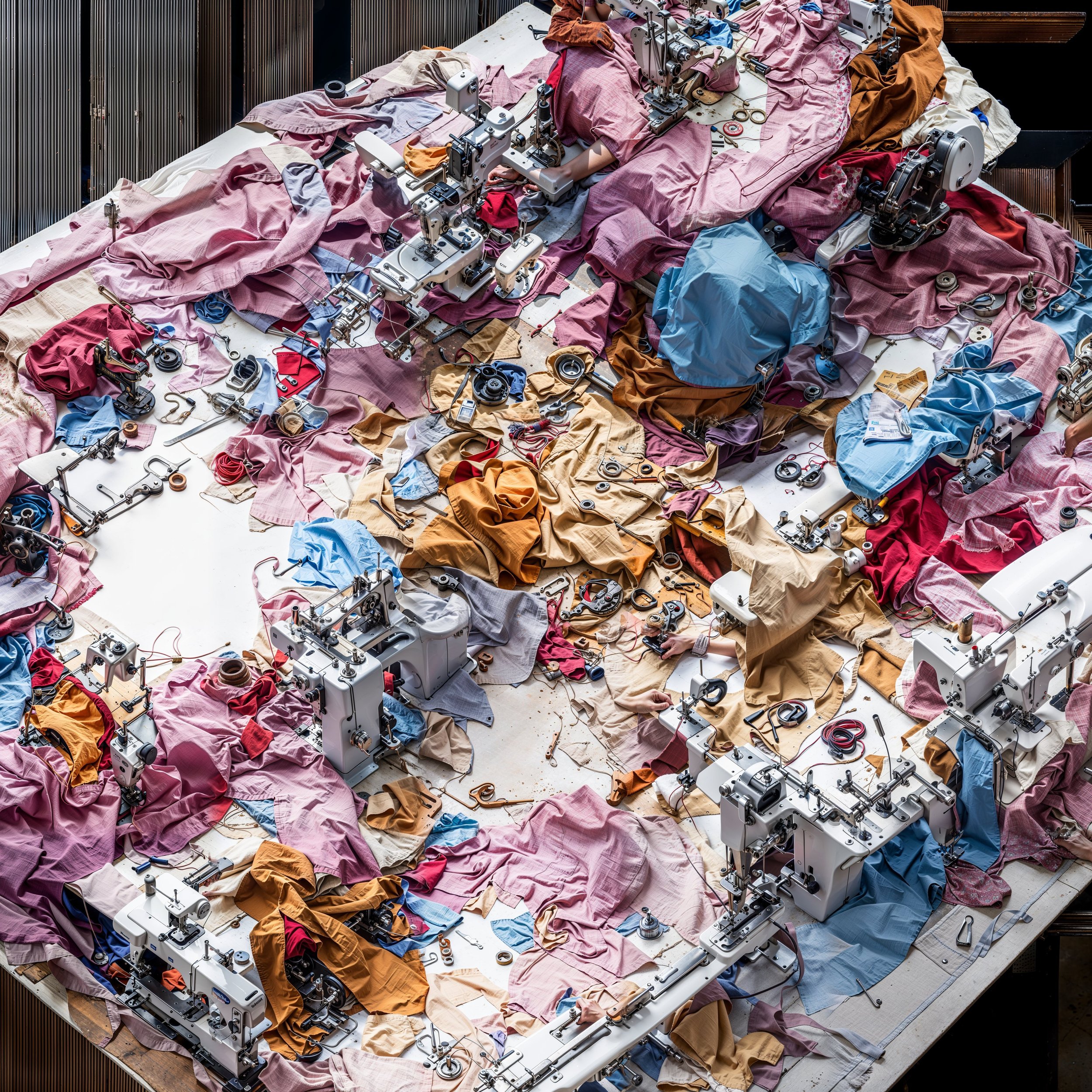Gallery Lightness21
Toshiki Hirano
Japanese Architectural Designer, Researcher & Educator
Toshiki Hirano, “Reinventing Texture”, Japan Pavilion, London Design Biennale 2021: A digital collage of surface textures, collected with a modern surrealist’s eye through the process of photogrammetry in the streets of Tokyo and London, was transformed through a combination of digitally generated silicone moulds and traditional papier-mâché handcraft into an 8-metre 3D wall relief with colour projection mapping. In collaboration with Royal College of Art, MA Interior Design.
The Limited Edition prints (for sale, below) were created by Toshiki Hirano from the digital collage and include a Walter Benjamin quote that inspires his work. Hirano also looked at the 1970s ‘Urban Frottage’ of Tomoharu Makabe. See RIBA Journal’s review.
“Cities are formed by myriad textures layered at multiple scales. At the microscopic scale, we find rugged asphalt, rough railway bridges, bumpy stone walls, sticky doughnuts, gloomy moss, crispy fallen leaves, fish shop fronts lined with glistening fish, shiny electronic billboards and smooth curtain walls. From a macroscopic point of view, we can find a jumbled-up building, a lumpy green space, and a knobby office building.”
“The German philosopher Walter Benjamin pointed out that we usually experience urban space in a state of distraction, without paying particular attention to those diverse textures. Benjamin argues that this reception of our urban space is ‘tactile’. We create images of the city in us not only by physically touching textures with our hand, but also by looking and listening to them in a caressing way - in other words, it is a resonance between different senses.”
“The Japanese artist Tomoharu Makabe's "Urban Frottage" in the 1970s is an example of an attempt to capture the image of a city through collecting the textures. Frottage is a technique in which a pencil is rubbed over a piece of paper placed on an object. Makabe used this technique to collect textures such as manholes, asphalt, and wire meshes in an attempt to capture the changing cityscapes of Tokyo during the high economic growth period of the 1970s.”
“This project revisits Makabe's Urban Frottage using photogrammetry, a 3D scanning technique which reconstructs a digital model of a target object from processing photographs of the object from various angles. No special equipment is needed to take the source photographs, and 50 to 100 photos taken with a handheld smartphone can create a highly accurate digital model. Whereas the scale of the object is limited depending on the size of the paper in Urban Frottage, photogrammetry has no scale limitations. By updating the tools from paper and pencil with smartphone, a new image of the city in the information society will emerge.”
Toshiki Hirano
Reinventing Texture
Limited Edition Prints
On Japanese Washi paper, featuring the “Reinventing Texture” digital collage, and made in the SEKISUI HOUSE - KUMA LAB at The University of Tokyo by Toshiki Hirano, 2021. Two versions of the “Reinventing Texture” limited edition print are now available - see below. Signed, numbered and dated. Shipped from London. Please contact for further information including framing.
01. Smaller size, featuring the quote by Walter Benjamin, 42 cm (length) x 30 cm (height), Edition of 100: £95
02. Larger size, 90 cm (length) x 21 cm (height), Edition of 35: £150
Please note: Each limited edition print is accompanied by the “Reinventing Texture” map, to navigate each object and surface texture in the collage, and a copy of the exhibition catalogue.
01
02
Toshiki Hirano is an architectural designer, researcher and educator, based in Tokyo, Japan. He is currently serving as Ruth Carter Stevenson Visiting Professor at The University of Texas at Austin, and a co-director of the International Architectural Education Platform SEKISUI HOUSE – KUMA LAB at The University of Tokyo.
Hirano obtained his Bachelor’s degree from Kyoto University before completing his Master of Architecture degree at Princeton University, where he was honoured with the Suzanne Kolarik Underwood Prize. Subsequently he earned his PhD from The University of Tokyo. He is a first-class registered architect in Japan.
Hirano founded his Tokyo-based design studio, Theoretical Hole Design (THD), in 2013, situating it at the crossroads of architecture, art, technology, crafts, and philosophy. The Studio explores the vast uncharted ‘hole’ that exists within this intersection.
THD’s innovative works have gained international recognition, with exhibitions at prestigious events and institutions, including London Design Biennale, British Embassy Tokyo, and Tokyo Midtown.
In 2020-21, at the height of the pandemic, and in collaboration with Clare Farrow Studio, Toshiki Hirano took to the empty streets as a modern flâneur, recording the street objects and textures that he observed, in a modern surrealist spirit. The knowledge that he gained from this research project using Japanese Washi papier-maché and photogrammetry led to the development in Tokyo of a self-supporting paper structure that justified the KUMA LAB’s belief in Washi paper as a structural material for the future of sustainable architecture.
Hirano’s installation experiments challenge perceptions about materials and technologies, in playful, unexpected ways.
Toshiki Hirano, “Ontology of Holes”, fluorescent faux fur, artificial gravel and mirror-edged voids, Tokyo installation, 2017; “Chance encounter of a sewing machine and an umbrella on an operating table”, AI generated image from ‘The Far Side of Excess Disruption’ in ‘Post-Digitality in Architecture’, a+u magazine, no.646, p.60, July 2024, guest-edited by Toshiki Hirano
